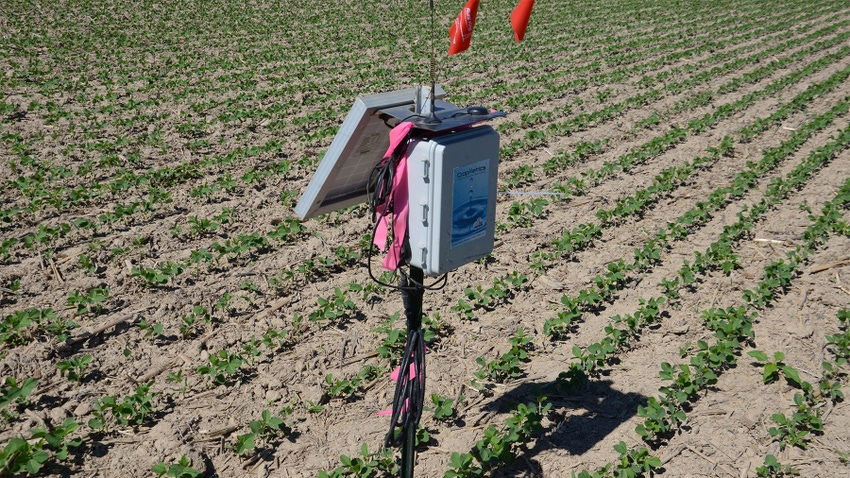
The Soybean Watch ’23 field has irrigation capability. That’s largely because a good portion of the field consists of sandy and/or gravelly soils. With irrigation in the field, it may seem like all problems are solved. In the real world, it doesn’t work that way.
“We’re glad irrigation is there, because we know that we will have some type of crop,” says Steve Gauck, a regional agronomy manager for Beck’s, based near Greensburg, Ind. Beck’s sponsors Soybean Watch ’23. “With this type of soil, you really need that type of insurance, because yields take a big hit on sandy and gravelly soils in years when moisture is limiting at the wrong times.”
However, Gauck acknowledges that just having the capability to irrigate doesn’t guarantee top yields. “You still must do everything else, including getting good stands, controlling weeds and providing adequate nutrition,” he says. “Irrigation is just another tool in the toolbox, and another facet which needs your management skill.”
Tough calls
In fact, it’s generally considered tougher to know when to irrigate soybeans compared to corn, especially early in the season. Unless you need to irrigate to get the crop up or unless it turns dry for several weeks, as it did in June, irrigation is usually more useful in soybeans later in the season, as they enter reproductive stages, Gauck says. He adds that most growers don’t want to irrigate soybeans more than necessary, concerned that it might trigger excess vegetative growth, which could lead to lodging.
An additional tool was added to the Soybean Watch ’23 field this year to help provide more information for those irrigation decisions. Betsy Bower, an agronomist with Ceres Solutions, agreed to install and monitor a CropX moisture probe for the second straight year. Once installed, it measures moisture levels down to 36 inches, with results available by smartphone instantly.
“We can tell how much water the crop is using, and we can see a graph that shows us soil moisture,” Bower says. “At the same time, we also get rainfall information from the site, so we know if the field received any rain in one of those unpredictable summer thunderstorms, or if it was skipped.”
Grower must decide
Bower cautions that having soil moisture and rainfall information helps, but it still can’t make the irrigation decision for you. “We supply the grower with information, and he or she makes the call,” she says.
In July, that call often became difficult. “We began to see that soil moisture was being depleted, and considered recommending irrigating,” she says. “But several times the weather forecast called for rain. We left it up to the grower. Sometimes those rains didn’t materialize.”
At one point in mid-July, after being skipped by a rain, the information from CropX indicated irrigation was needed, so the grower began irrigating. This time, it did rain. He simply shut down the pivots when rain arrived.
“It’s not an exact science,” Bower says. “What we do with the CropX system is provide information so the grower can make an informed decision.”
Read more about:
IrrigationAbout the Author(s)
You May Also Like




